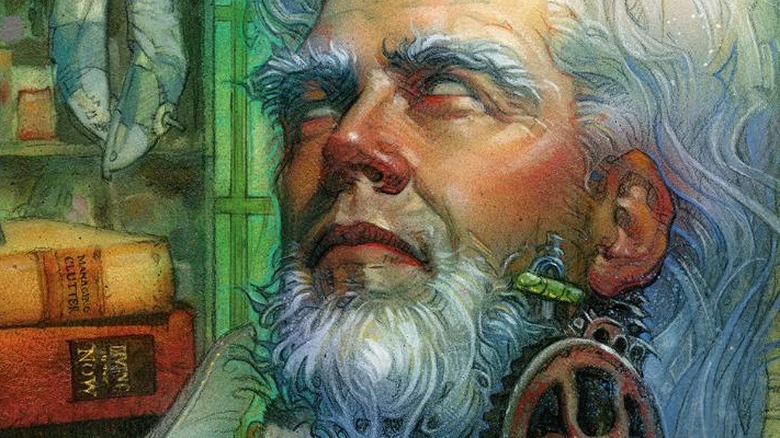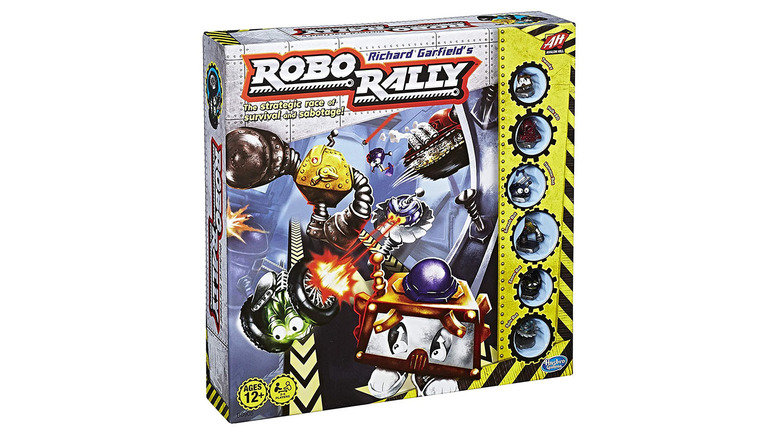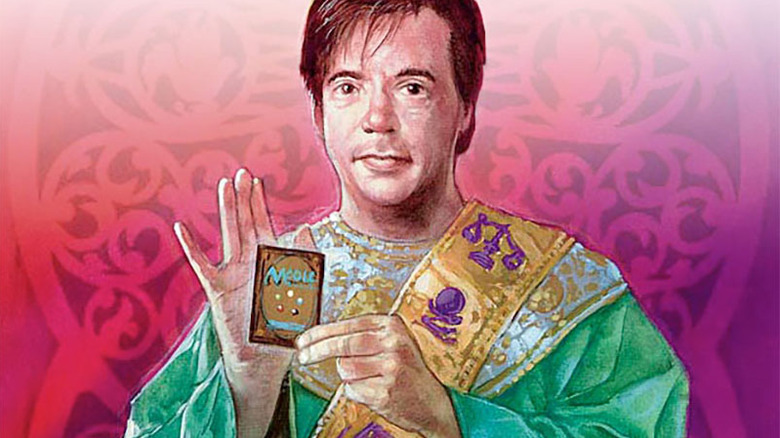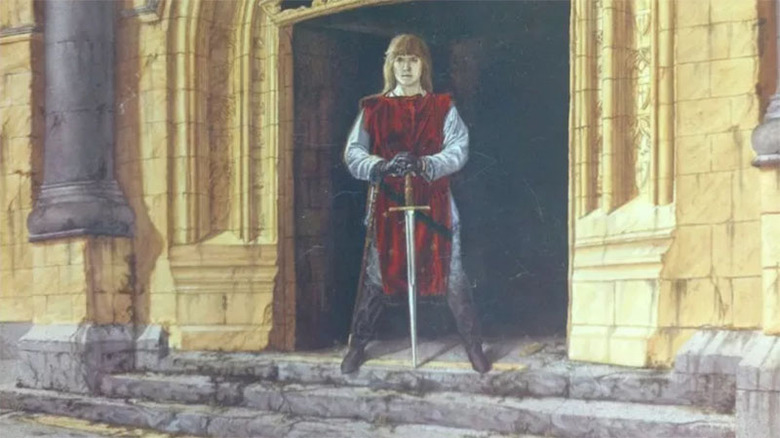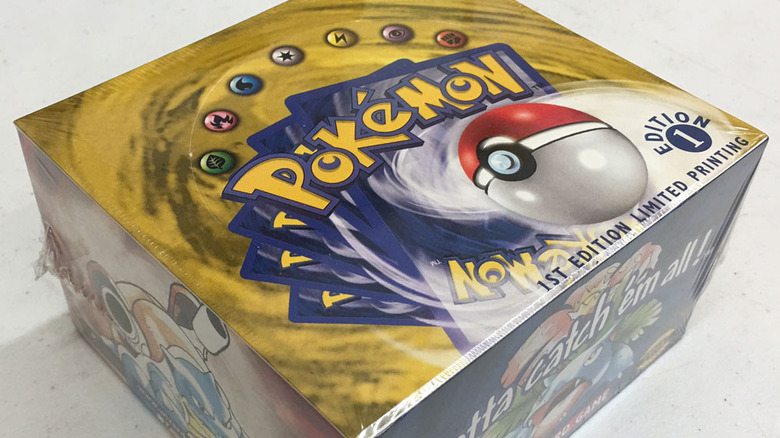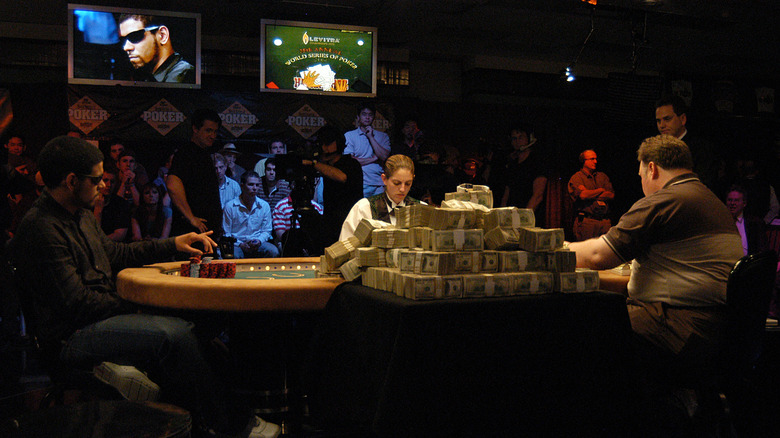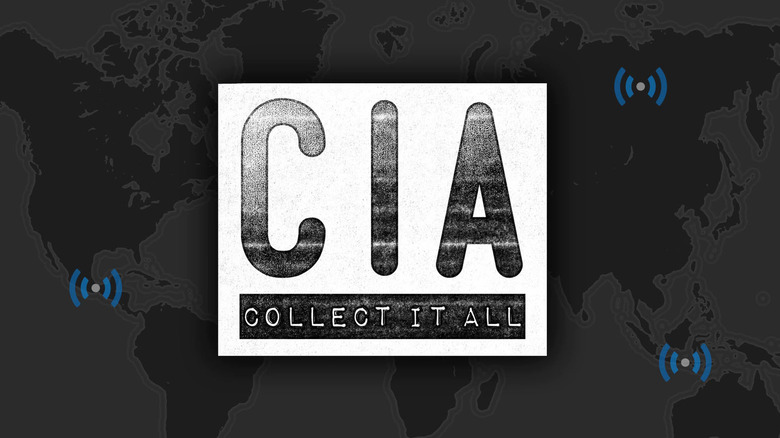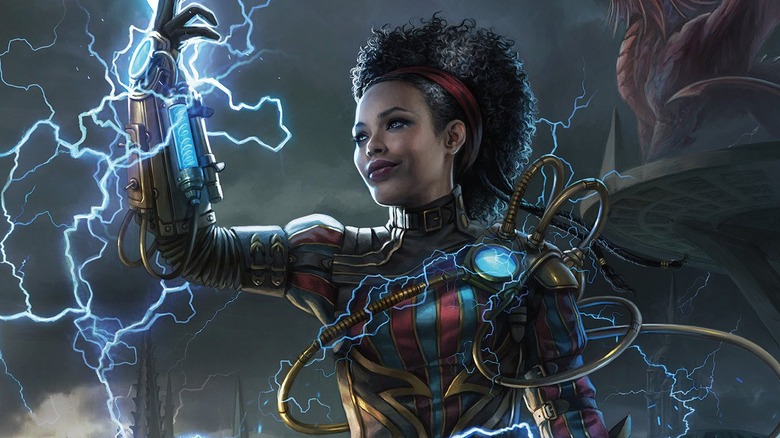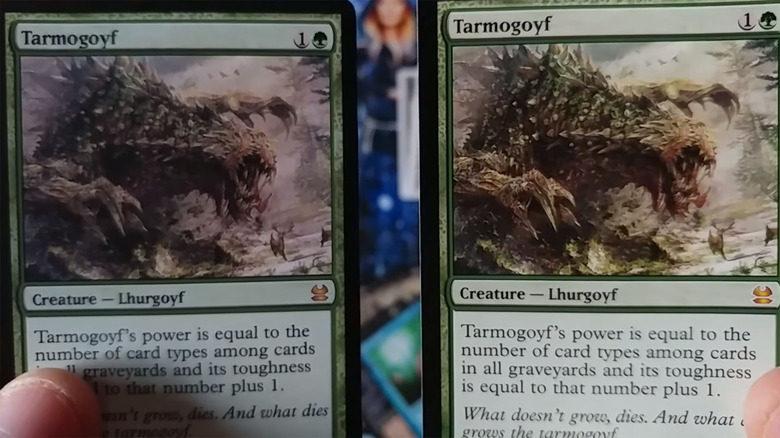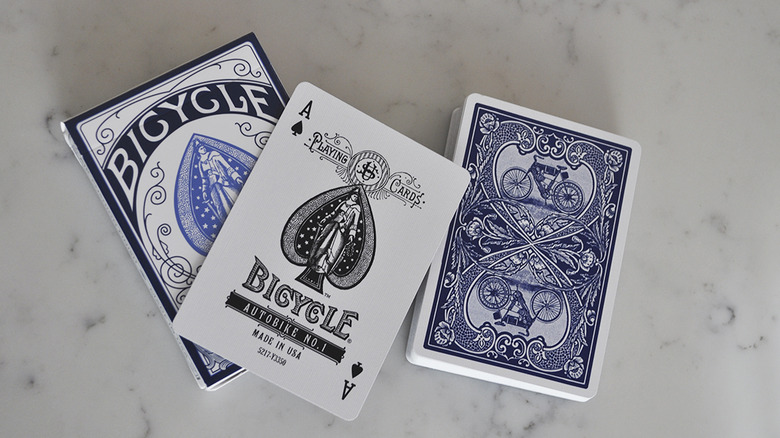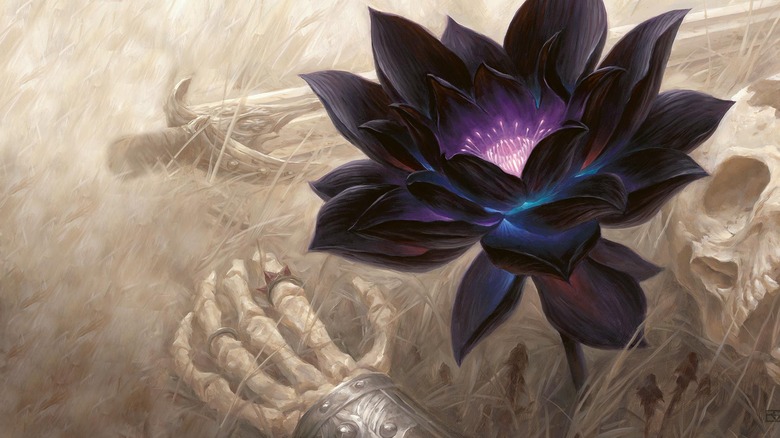The Untold Truth Of Magic: The Gathering
You don't need to know the rules or spend hundreds of dollars on cards to know that Magic: The Gathering is a big deal. Wizard of the Coast's genre-defining collectible card game has delighted players all over the world for over 25 years, and by all indications it's only going to get bigger and bigger.
But what makes Magic: The Gathering so special? It's not just the game's innovative trading card game structure, which gives every player his or her own deck and changes the rules on the fly. It's not just the game's sprawling competitive scene, its pricey second-hand market, Wizards of the Coast's many legal struggles, or all of the extra tie-ins and lore. It's all of the above — plus more. Magic: The Gathering is always changing, but one thing remains constant: play a game or two, and it's almost guaranteed that you'll end up hooked for life.
From robots to wizards (and back again)
When amateur game designer Richard Garfield first met with game publisher Wizards of the Coast, he wasn't talking about planeswalkers, mana, or lands for various colors. In fact, he wasn't there to pitch a card game at all.
Instead, Garfield was trying to sell a board game called RoboRally. As Adkison tells the story, everyone at Wizards of the Coast liked RoboRally, but there was no way that the company could publish it. See, Wizards of the Coast made tabletop role-playing games, not board games, and didn't have anywhere close to enough money to publish RoboRally. But they told Garfield that a card game might work just fine. Cards are a lot easier to manufacture than board games, and Adkison thought that a game with colorful fantasy art and a relatively short playtime would do very, very well at gaming conventions.
A week later, Garfield met with Adkison again and described his vision: a game in which every player had his or her own deck, in which the rules could be changed on the fly by individual cards, and where some cards would be rarer than others, driving collectors wild. Adkison loved it. Two years later, Magic: The Gathering arrived on store shelves. The gaming market has never been the same.
Don't feel too bad for RoboRally, either: thanks to Magic's runaway success, Wizards of the Coast was able to publish that, too. By all accounts, it's pretty good.
The game design wunderkind
Before Magic: The Gathering, Richard Garfield only designed games as a hobby. He worked in academia, first as a PhD candidate at the University of Pennsylvania, and later as a math professor at Whitman College. However, he'd been making games since he was a kid, when Dungeons & Dragons opened his eyes to just how much untapped potential tabletop games really had. Garfield may not have been a great teacher, but he'd been making games all of his life.
In fact, Garfield first came up with Five Magics, the card game that'd become Magic: The Gathering, when he was still a teenager. Like Magic: The Gathering, Five Magics players drew resources from lands, and cast spells characterized by different colors. The game was heavily inspired by Cosmic Encounter, a board game featuring over 50 alien races, each with unique abilities. When Garfield met with Wizards of the Coast a decade later, however, Five Magics still wasn't complete — it was just one of many unfinished prototypes sitting on Garfield's shelf.
When Adkison asked Garfield to make a card game, however, Five Magics got a new lease on life. Garfield used one of his other games, Safecracker, to come up with the idea of a trading card game, and then used that concept to give Five Magics the hook it desperately needed. A few years later, Garfield was making games full-time, overseeing titles like Magic: The Gathering, Netrunner, Vampire: The Eternal Struggle, and many more.
Magic's first trick: saving Wizards
In 1978, Peter Adkison discovered Dungeons & Dragons. He fell for it, and he fell for it hard. Over the next 12 years, Adkison played D&D and other tabletop RPGs constantly. After a while, simply playing games wasn't enough. He wanted to make them too and, in 1990, decided to create his own RPG company, Wizards of the Coast.
Unfortunately, starting a business isn't easy, and Wizards of the Coast ran into problems almost immediately. The company's first product, The Primal Order, was a 200-plus page rulebook designed to work across a variety of different RPGs. Unfortunately, that versatility caused trouble. When describing how to integrate The Primal Order's pantheon of gods and deities with various role-playing systems, Wizards of the Coast's first official product dropped the names of other RPGs without permission. That's copyright infringement, and RPG-maker Palladium Games quickly sued, nearly putting Wizards of the Coast out of business.
Thankfully, The Primal Order wasn't the only trick that Wizards had up its sleeve, and Magic: The Gathering came to the rescue. In order to protect the in-development card game from Wizards' ongoing legal troubles, Adkison created Garfield Games, a separate corporation that leased Magic to Wizards of the Coast. It worked. In fact, Magic: The Gathering proved so popular that, just a few years later, Wizards of the Coast bought TSR, the company behind Dungeons & Dragons, bringing everything full-circle.
Magic 1, Pokemon 0
Palladium wasn't the only gaming company that clashed with Wizards of the Coast. Nintendo had some problems with it, too. Oh, sure, at first everything was great between the two. In 1998, Wizards of the Coast signed a deal to distribute the Pokémon Trading Card Game in the West. It was a huge hit. In its first six weeks on the market, Wizards of the Coast sold over 400,000 packs of Pokémon cards.
That meant that Wizards of the Coast was making a lot of money, and Nintendo wanted a bigger piece of the pie. Things got toxic very, very quickly. In 2002, Nintendo and The Pokémon Company USA poached some of Wizard's top executives, including two vice presidents. In 2003, Nintendo refused to let Wizards of the Coast release two expansion packs, even though the cards were more or less ready for release. Later, Nintendo informed Wizards that it wouldn't renew the company's contract and started releasing cards from the new Ruby/Sapphire set before Wizards of the Coast's license had officially expired.
The day after its licensing agreement ended, Wizards of the Coast retaliated with a lawsuit accusing Nintendo of stealing trade secrets and technologies and violating its intellectual property, including a patent on the "trading card game method of play" that Magic: The Gathering made famous. Nintendo folded. The case was settled out of court for an undisclosed sum and the two companies went their separate ways.
The Magic players that go poker pro
It's not easy to make a living playing Magic: The Gathering, but some of Magic's biggest fans are raking in the dough — by playing an entirely different game. Magic and poker may not have a lot in common, but there's a surprising amount of crossover between the two communities, and many of the world's best professional gamblers cut their teeth on the game-changing CCG.
Take Eric Froehlich, for example. Not only was Froehlich once the youngest player ever to win a gold bracelet at the World Series of Poker, but he was once the number one ranked Magic player in the world. Brock Parker, a Magic vet, won two bracelets at the World Series of Poker in 2009. Poker pro David Williams still participates in major Magic tournaments (although he did spend a year on Wizards of the Coast's naughty list for cheating). The list goes on and on.
But why? Mechanically, the two games aren't similar at all. Well, according to the pros, it all comes down to competition. Kids may not be allowed to gamble, but they are allowed to play in Magic tournaments. "Magic trains you to stay on your toes for long periods of time and know that every decision matters," Williams says. Froehlich adds that some of the skills you learn playing Magic, like "bluffing and reading your opponent," carry over into both games, too. In fact, Froehlich thinks that Magic is the "best game ever made."
Saving the world, one card game at a time
Games can do more than entertain. They can teach, as the United States' Central Intelligence Agency knows very, very well. In order to train prospective agents, the CIA regularly develops board games that teach players the ins and outs of intelligence gathering — and at least one of them is directly inspired by Magic: The Gathering.
Official CIA documents, uncovered with the help of a Freedom of Information Act request, describe Collection Deck as a "cross between classic card games like Bridge, Hearts, and Whist and collectible card games like Magic: The Gathering and Pokémon." The goal of the game is to earn points by solving various "intelligence problems," which is done by using "collection technique" cards, while stopping fellow players from doing the same by unleashing "reality checks" at inopportune times. In hardcore mode, players also need to describe how the collection techniques described on the cards actually apply in real life, and the game ends when a player earns 10 total points — or, as the rules cheekily put it, when "everyone has had enough and wants to go do something else."
If that sounds fun, you can actually play Collection Deck at home, thanks to some enterprising game designers. CIA: Collect It All recently blew past its $30,000 Kickstarter goal to amass a whopping $151,814 that'll be used to recreate Collection Deck in a colorful, consumer-friendly 150-card deck.
The crossover 25 years in the making
In 1996, D&D publisher TSR was drowning in $30 million worth of debt and put its assets up for auction. In the bidding war that ensued, Wizards of the Coast snapped up TSR (as well as fellow RPG-maker Five Rings Publishing) for a cool $25 million, bringing the world's most popular collectible card game and its most-loved RPG under one roof.
And yet, despite sharing a single corporate home, and despite Dungeons & Dragons' clear influence on early Magic cards, Wizards of the Coast kept the two franchises entirely separate for the better part of two decades. Now, at long last, the barriers are starting to break. In 2016, Wizards of the Coast released a free supplement called Plane Shift: Zendikar, which used Dungeons & Dragons to put a new spin on one of Magic's many worlds (and to sell some copies of Wizards' $40 tome, The Art of Magic: The Gathering—Zendikar). Crossover-hungry fans must've been pleased, because Plane Shift add-ons for Magic worlds like Amonkhet and Kaladesh quickly followed.
Wizards of the Coast must've liked how things turned out too, because its big November 2018 release, Guildmaster's Guide to Ravnica, takes the Magic and D&D crossover to the next level. The massive $50 hardcover contains everything that eager dungeon masters need to bring Ravnica, one of Magic's most popular settings, to life. At long last, the worlds of D&D and Magic are one and the same.
How to spot a counterfeit Magic card in one easy step
It's a tale as old as time: the better that technology gets, the easier it becomes to rip people off. Magic: The Gathering is no exception. The past few years have seen a major uptick in high-quality imitation cards, and according to experts, it's only going to get worse.
The main culprit seems to be the rise of overseas printing companies that are happy to crank out the counterfeit cards in bulk. Long-time Magic players can tell the difference (fake cards don't feel quite right, they say, and fonts look a little off), but casual fans probably won't notice, and many scammers put "valuable" cards in protective plastic sleeves anyway. Some people say that you can identify fake cards by shining a light through them, but others argue that fakers have figured out how to get around the "light test." Some counterfeiters even scuff their cards up to make them look used, or put them in resealed booster packs to make them look more legitimate.
In reality, there's only one way to tell if a Magic card is the real deal or not: tear it in half and see if it's got a blue core inside. If it does, it's real — and, also, torn in half. In other words, testing to see if your $1,000 Magic card is legit or not is a major gamble. Most people probably won't want to take the risk.
Even trade wars have collateral damage
In summer 2018, the Trump administration's "America First" trade war wreaked havoc on everything from steel to ketchup, and some Magic: The Gathering players are feeling the squeeze. After Canada retaliated by levying tariffs on certain American-made goods, many fans in the USA's neighbor to the north noticed that their favorite game was suddenly 10% more expensive than it used to be, even while similar products like board and video games remained untouched.
It's not that Canada's Prime Minister, Justin Trudeau, had it out for players of collectible card games. He's simply trying to make things difficult for Republicans. As it turns out, the United States Playing Card Company, manufacturer of world-renowned brands like Bicycle, Bee, and Aviator, is right smack dab in Kentucky, home of GOP Senate Majority Leader Mitch McConnell. The CBC thinks that Canada's new playing card taxes were intended to make McConnell's job just a little bit harder.
Unfortunately, as far as tariffs are concerned, trading card games like Magic, Pokémon, Yu-Gi-Oh!, and others also fall under the playing card designation. For Canadian players, that's a problem — and it's not great for retailers, either. After all, if you want to buy regular playing cards from a Canadian company, you can. But if you want Magic cards, the Seattle, Washington-adjacent Wizards of the Coast is your only legitimate source. In other words, if you want to play, you'll have to pay.
The story of the Black Lotus, the most expensive Magic card of all time
It might be hard to eke out a living playing Magic: The Gathering, but if you've got the right cards you can make a ton of cash as a collector. Just ask the lucky seller who managed to unload a Black Lotus, one of Magic's rarest and most sought-after cards, on eBay for a whopping $87,672. That's a lot of money for a small piece of cardboard even compared to previous Black Lotus sales, which tended to top out somewhere around $27,000.
Of course, Black Lotus isn't a regular Magic card, and there's a reason why people think it's so special. For one, Black Lotus is incredibly powerful: it costs zero mana to play and gives players three back in return. For a game based on managing limited resources, that's a huge advantage. It's also phenomenally rare. Only 1,100 copies of Black Lotus were printed in Magic's inaugural set, known as Alpha, which launched all the way back in 1993. As you can imagine, finding a mint-condition copy of a card that's a quarter century old is pretty hard to do.
All that being said, you won't see Black Lotus pop up much during competitive play. Black Lotus is banned from most official tournaments, and its rarity means that it's not likely to appear during other gatherings, either.

